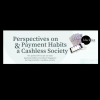We came across the following post on the social media site X:

The post claims that the prevalence rate of autism in children, which was ‘almost non-existent before the 1990s’, had ‘skyrocket(ed)’ since then.
The post includes a graph that shows the prevalence rate of autism in children per year, with close to zero cases being recorded on 1990 and the years prior, but a large spike since and the numbers of recorded cases trending upwards.
When we conducted a keyword search on the issue on X, we found similar posts from recent months alluding to the phenomenon, which appears to be referring to the US. Though the original post did not attribute a cause to the trends, these links were suggested in the other posts.
Some causes suggested for this trend included vaccines, ultrasounds on pregnant women and fraudulent diagnoses in order to receive funding by schools.
Old Cases of Disinformation
We conducted a web search on the allegations linking autism trends to the various causes that were claimed to be responsible.
In the case of vaccines. we found that it likely originated from the Wakefield studies, a well-known case of vaccine disinformation that still perpetuates vaccine hesitancy today.
The Wakefield studies are two studies conducted by the British doctor Andrew Wakefield in 1998 and 2002 that examined links between the measles, mumps and rubella (MMR) vaccine and autism.
The studies, however, were critically flawed. The 1998 paper, which had been originally published in the renowned medical journal Lancet, was retracted and an investigation into it found that it was fraudulent and that it had deliberately misrepresented the data within it. Wakefield, the head researcher, had his medical licence revoked.
Since the publication of Wakefield’s studies, multiple more recent studies have found no link between vaccines or vaccine ingredients, and autism.
With regard to the claim of a link between autism and ultrasound use, we found that it may have originated from a 2018 medical study that found a correlation between ultrasound depth during pregnancy and prevalence of autism in children.
These findings, however, were limited to metric measuring the depth of the ultrasound, which is largely determined by the anatomy of the mother. The same study did not find any correlation between number or duration of ultrasound scans and the incidence of autism, and reviews of the data have suggested that it may be a false positive.
In addition, more recent studies from 2023 ‘found no evidence that prenatal ultrasound use increases ASD (autism) risk’.
With regard to the allegations linking fraud in schools and higher incidence rates of autism, we found that there had been cases of fraud in the US healthcare system for schools where students with autism were treated. These cases, however, largely dealt with fraudulent claims made to the US insurance program—Medicaid—for treatment that had not been provided.
We did not find any evidence that the rise in the incidence rate of autism was caused by the introduction of the 1990 Americans with Disabilities Act (ADA), which is a federal civil rights law that ‘prohibits discrimination against people with disability’.
Explaining the Spike
As the causes attributed in the X posts do not explain the spike in the autism rates, we conducted a further search and found that the trend was explained by rather more mundane reasons.
An article in the Scientific American points out that the criteria allowing the diagnosis of autism was first introduced in 1980, then expanded in 1987 and broadened further in 1994 and 2013. This period correlated strongly with the rising number of cases observed. Since 2013, an ASD diagnosis includes those who suffer from Asperger syndrome and pervasive developmental disorder, conditions that were originally considered distinct.
Other policy changes and recommendations may also have contributed to the rise in the number of those seeking and receiving diagnoses. In 1991, the US Department of Education made children diagnosed with autism eligible for special education services. In addition, The American Academy of Paediatrics in 2006 recommended that all children be screened for the condition during paediatrician visits at 18 and 24 months of age
These changes in the definition of autism and the policy towards those suffering from it coincided with a general increase in the awareness of the condition and its presentation, along with a shift in societal preference for treatment rather than institutionalisation.
We found that the reasons explained in the Scientific American article to be corroborated in multiple other sources.
The rise in the prevalence of autism in the US is therefore explained by a combination of these factors. While the number of recorded cases of autism in children has risen considerably since 1990, this is due to the changes in which the condition is defined, treated and legislated for, which have made it easier and more beneficial for families to obtain an autism diagnosis when their child suffers from the condition.
There is no evidence to support the claim that the number of people actually suffering from autism has actually risen due to a singular cause, as suggested in the X posts. The X post is therefore mostly false and misleading, even though the data used in the graph appears to be accurate.







